Chamomile is one of those perennial herbs that have a beautiful and eye-catching appearance. Many gardeners love these flowers for the vibrant beauty they bring to the home.
Chamomile is easy to grow, easy to care for and requires little effort to maintain and they can flower every year.

Besides, Roman chamomile is also one of the herbs used medicinally to treat a number of ailments such as nervous agitation, relieve muscle spasms, relieve abdominal pain, and various skin disorders.
Therefore, many gardeners are very concerned about confusing Roman daisies with female weeds that resemble this flower in the garden.
How to distinguish between Roman chamomile and other types of weeds? Let’s learn about 5 plants that resemble Roman chamomile in this article.
Top 5 Weeds That Look Like Chamomile
If you love the sweet beauty of Roman chamomile and don’t want any weeds to disrupt that beauty, you need to pay attention to the 5 types of weeds that resemble Roman chamomile below.
Especially, if you grow Roman chamomile for medicinal purposes, this article will give you useful information to get rid of poisonous weeds.
1. Anthemis Cotula
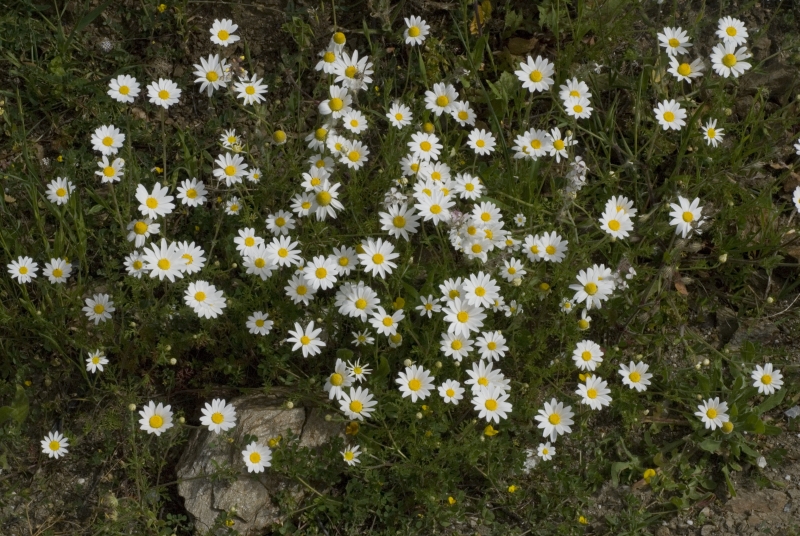
Anthemis Cotula is one of those flowers that looks very similar to Roman chamomile. However, Anthemis Cotula has a very strong and foul smell.
This flower has several different names like mather, dog-Finkle, dog- or hog’s-fennel, chigger-weed, and so on. They often appear on the sides of roads, grasslands, and fields.
The stem is hairless, the leaves are soft, and the shape of the leaves is feather-like with very thin lobes. The appearance of the Anthemis Cotula flower is very similar to that of the Roman Chrysanthemum flower with white petals and yellow stigmas.
To distinguish this flower from chamomile, you only need to rely on its scent because it is very strong. In particular, Anthemis Cotula is a poisonous plant so it can affect the health of animals and children.
2. Leucanthemum Vulgare
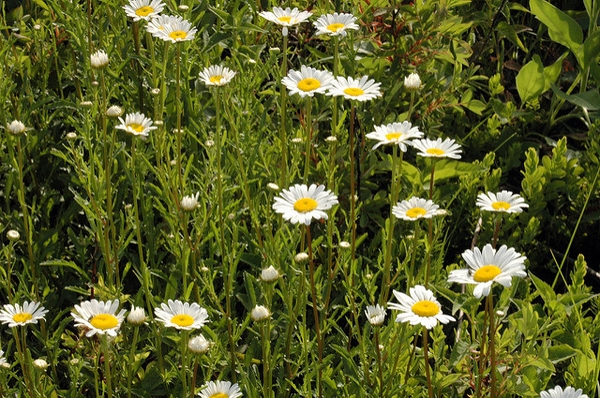
Leucanthemum vulgare is a weed that closely resembles Roman chamomile. You can easily be confused by their appearance. This grass usually grows in steppe lands.
They have several other names like oxeye daisy, ox-eye daisy, dog daisy, marguerite, and so on. This weed grows and thrives in areas such as forests, fields, grasslands, and isolated areas.
Leucanthemum vulgare grows well on thick, moist soil. The average weed height is 24 inches, hairy under the stem. The flowers of this grass are very similar to chrysanthemums with white leaves and yellow stigmas.
The size of the leaves and inflorescences are also very similar to chrysanthemums, so if you don’t look closely, you might find it hard to tell the difference between Leucanthemum vulgare and Roman chamomile.
3. Matricaria discoidea
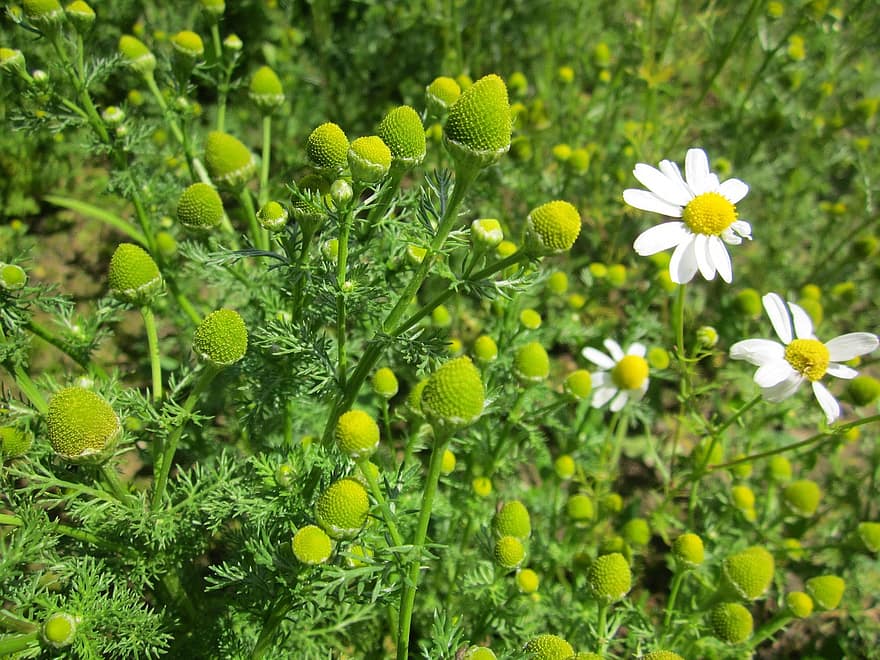
Matricaria discoidea is also known by many people as the pineapple tree. This is because this weed has a pineapple-like aroma. They can reproduce and grow in extreme weather conditions.
This weed can even grow in areas where the soil is solid and poor in nutrients. Many people may know this grass by names like Wild Chamomile and May Weed.
Matricaria discoidea’s flourishing period is from May to late October. Their flowers are similar to chrysanthemums, however, their petals are few and stunted.
The flowers of this grass are usually very short-lived and they often grow on the side of roads, paths, plantings, and organic mulch areas.
Many people may confuse Roman chamomile and Matricaria discoidea because they are both edible. However, it will taste like pineapple and their leaves can be used in salads or as a treatment for fevers, aches, and digestive problems.
Read more: Weeds That Look Like Parsley? Easy Way For You To Distinguish
4. Tripleurospermum Inodorum
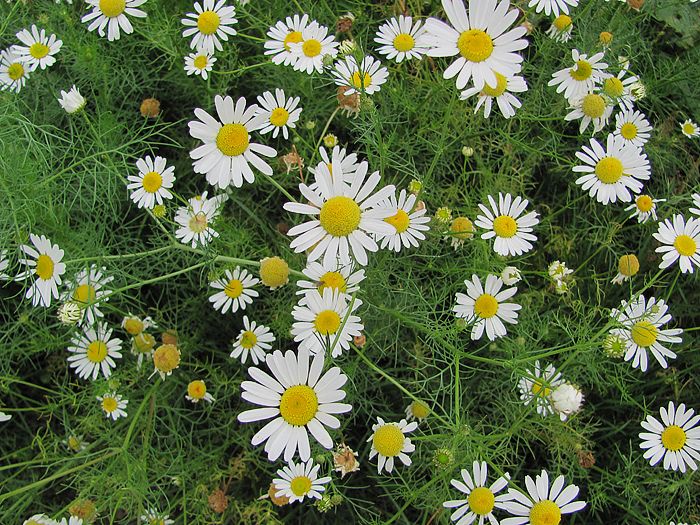
Another weed that many people confuse with Roman chamomile is Tripleurospermum Inodorum. This weed is also known scientifically as False Chamomile and Scentless Chamomile.
This grass has chrysanthemum-like flowers with white petals and yellow pistil. False Chamomile can be easily found in solid ground, grassland, fields and roadside.
Tripleurospermum Inodorum will usually bloom from May to September. Their flowers are usually bloomed on top with a number of 10 to 25 flowers. Leaf length ¾ – 3 inches, small and light.
If you just take a quick look and glance, you will have a hard time distinguishing this weed from Roman chamomile because they are so similar.
In particular, to spot this flower in the Roman chrysanthemum garden, you should look at the leaves and petals. The petals and leaves of Tripleurospermum Inodorum are both thinner, smaller, and lighter than Roman chamomile.
5. Achillea Ptarmica
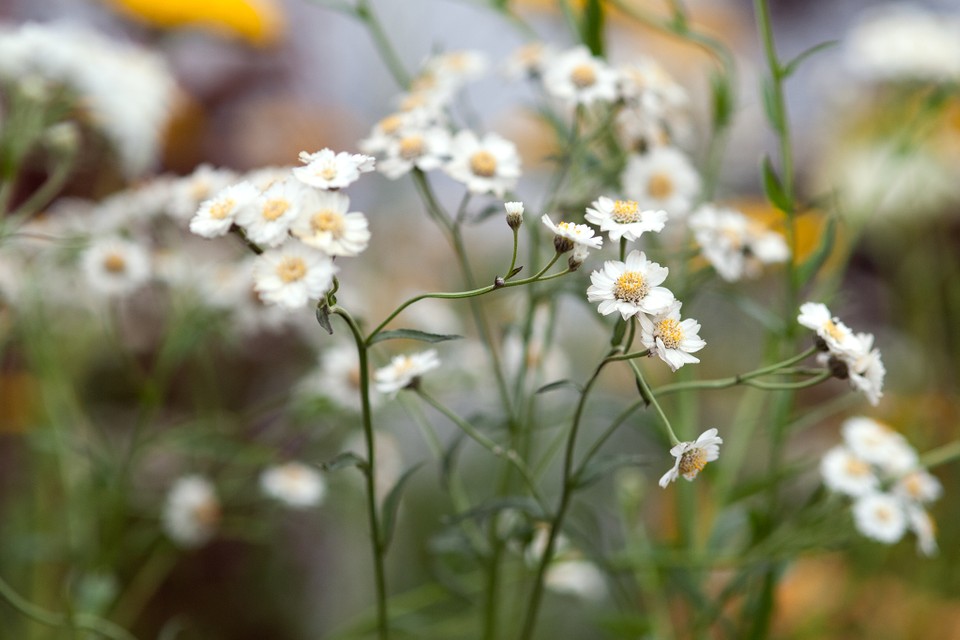
Achillea Ptarmica is native to Europe and occurs in areas of North America. They go by different names such as sneezeweed, sneezewort, European pelitory, fair-maid-of-France, goose tongue, bastard pellitory, sneezewort yarrow, etc.
This weed usually flowers from June to August. They are weeds that like sunlight and the right amount of water, avoiding too wet soil.
The flowers have snow-white leaves and dark green leaves. This herb is used to make essential oils and can be eaten both raw and cooked. This plant can repel insects and when you eat them, you will feel your tongue go numb.
Therefore, Achillea Ptarmica can be used for people with mouth ulcers or toothaches to relieve symptoms.
Conclusion
Chamomile not only brings a sweet beauty to your home but it is also a medicinal herb. Chamomile will effectively treat diseases such as nerves, relieve spasms, relieve colic and skin problems.
However, some weeds are very similar to Roman grass, but they are poisonous and have a very unpleasant smell. Therefore, you need to remove and identify weeds to avoid affecting the health of animals and children.
Some grasses are similar to Roman daisies such as Anthemis Cotula, Achillea Ptarmica, Tripleurospermum Inodorum, Mricaria discoidea, Leucanthemum vulgare.
Of these weeds, some are poisonous and inedible. So you need to carefully observe and remove them to avoid confusion with chamomile and use them as a medicinal herb.